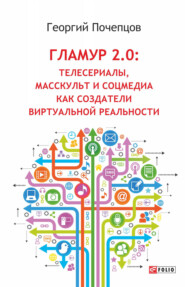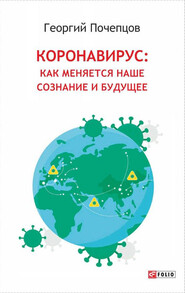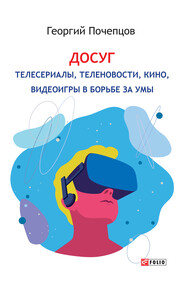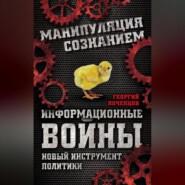По всем вопросам обращайтесь на: info@litportal.ru
(©) 2003-2024.
✖
Управление будущим
Жанр
Серия
Год написания книги
2019
Теги
Настройки чтения
Размер шрифта
Высота строк
Поля
П. Век не расставался с этим другим, мистическим, типом опыта и в зрелом возрасте. Уже работая в «Шелле», он проводил ежегодно несколько недель в Индии со своим гуру. А из Японии он привез историю, рассказанную ему садовником. Если бросить камень в ствол бамбука, то он скользнет беззвучно, если же правильно выбрать точку, то попавший камень издаст звук. Правильная точка возникает, когда ты услышишь этот звук в своей голове заранее.
Правильное видение такого порядка помогает и в определении будущего. То, что другие видели как сложную интеллектуальную задачу, П. Век рассматривал как задачу правильного восприятия. Переход от сценариев первого поколения, которые акцентируют неопределенности, к сценариям второго поколения, которые сокращают этот набор возможностей за счет анализа предопределенных элементов, для П. Века был возможен за счет его «видения» будущего.
Литература
Стратегия как базис
1. Luttwak E. N. Strategy. The logic of war and peace. – Cambridge etc., 2001.
2. Gray C. Modern strategy. – Oxford, 1999.
3. Barnett T. P. M. The Pentagon’s new map. War and peace in the twenty-first century. – New York, 2004.
4. Stark R. The rise of Christianity. How the obscure, marginal Jesus movement became the dominant religious force in the Western world in a few centuries. – San Francisco, 1997.
5. Toffler A. and H. War and anti-war. Survival at the dawn of the 21st century. – London, 1993.
6. Lees-Marshment J. The political marketing revolution. Transforming the government of the UK. – Manchester etc., 2004.
7. Lees-Marshment J. Political marketing and British political parties. – Manchester etc., 2001.
8. Hughes K. Ten minutes from normal. – New York, 2004.
9. Fukuyama F. The end of history and the last man. – New York, 1992.
10. Бродель Ф. Игры обмена. – М., 1988.
11. Лиделл-Гарт Б. Энциклопедия военного искусства. Стратегия непрямых действий. – М. – СПб., 1999.
12. Сунь-цзы. Искусство войны. – Ростов-на-Дону, 2002.
13. Warden J. A. The enemy as a system // Airpower Journal. – 1995. – Spring.
14. Schwartz P. Inevitable surprises / Rethinking the future nature of competition and conflict seminars series // www.jhuapl.edu.
15. Kometer M. W. The new terrorism. The nature of the war on terrorism. – Maxwell, 2004 /School of Advanced Airpower Studies.
16. Ronfeldt D., Arquilla J. What next for networks and netwars? // Networks and netwars. Ed. by J. Arquilla, D. Ronfeldt. – Santa Monica, 2001/ RAND.
Сценарный инструментарий
1. Heijden van der K. Scenarios. The art of strategic conversation. – New York, 2005.
2. Schwartz P. The art of the long view. Planning for the future in an uncertain world. – New York, 1991.
3. Schwartz P. Inevitable surprises. Thinking ahead in a time of turbulence. – New York, 2003.
4. Stevenson W. a. o. Using Event Structure Analysis to understand planned social change // International Journal of Qualitative Methods. – 2003. – Spring – 2.
5. Wilson D. S. Evolutionary social constructivism // The literary animal. Evolution and the nature of Animal. – Evanston, 2005.
6. Lempert R. J. a. o. High-performance government in an uncertain world // High-performance government. Structure, leadership, insentives. Ed. by R. Klitgaard, P. C. Light. – Santa Monica, 2005.
7. Popper S. a. o. Shaping the future // Scientific American. – 2005. – April.
8. Hammes T. X. The sling and the stone. On war in the 21st century. – New York, 2006.
9. Werff van der T. J. Scenario-based decision making – technique // www.globalfuture.com.
10. Connecting present and future // www.gbn.org.
11. Wylie I. There is no alternative to… // www.fastcompany.com.
12. Kahane A. How to change the world: lessons for entrepreneurs from activists //www.arlingtoninstitute.org.
13. The Mont Fleur scenarios // www.arlingtoninstitute.org.
14. Rowe G., Wright G. The Delphi technique as a forecasting tool: issues and analysis // International Journal of Forecasting. – 1999. – Vol. 15. – Pp. 353–375.
Анализ и конструирование будущего
1. Heijden van der K. Scenarios. The art of strategic conversation. – New York, 2005.
2. Груссе Р. Чингисхан. – М., 2002.
3. Kelly E. a. o. What’s next? Exploring the new terrain for business. – Cambridge, Mass., 2002.
4. Schwartz P. Inevitable surprises. Thinking ahead in a time of turbulence. – New York, 2003.
5. Nye J. S., Jr. Soft power. The means to success in world politics. – New York, 2004.
6. Schwartz P. The art of the long view. – New York etc., 1991.
7. Доклад Национального разведывательного совета США «Контуры мирового будущего» // Россия и мир в 2020 году. – М., 2005.
8. Popper S. a. o. Shaping the future // Scientific American. – 2005. – April.
9. Lempert R. J. a. o. High-performance government in an uncertain world // High-performance government. Structure, leadership, insentives. Ed. by R. Klitgaard, P. C. Light. – Santa Monica, 2005.
10. Barnett T. P. M. The Pentagon’s new map. War and peace in the twenty-first century. – New York, 2004.
11. Шинкаренко А. П. Методологические проблемы переподготовки управленческих кадров в России // Вопросы методологии. – 1997. – № 3–4.
12. Громыко Ю. Стратегические горизонты проектного сознания // www.mmk-mission.ru.
П. Шварц о будущем развитии мира
1. Schwartz P. The art of the long view. Planning for the future in an uncertain world. – New York, 1991.
Правильное видение такого порядка помогает и в определении будущего. То, что другие видели как сложную интеллектуальную задачу, П. Век рассматривал как задачу правильного восприятия. Переход от сценариев первого поколения, которые акцентируют неопределенности, к сценариям второго поколения, которые сокращают этот набор возможностей за счет анализа предопределенных элементов, для П. Века был возможен за счет его «видения» будущего.
Литература
Стратегия как базис
1. Luttwak E. N. Strategy. The logic of war and peace. – Cambridge etc., 2001.
2. Gray C. Modern strategy. – Oxford, 1999.
3. Barnett T. P. M. The Pentagon’s new map. War and peace in the twenty-first century. – New York, 2004.
4. Stark R. The rise of Christianity. How the obscure, marginal Jesus movement became the dominant religious force in the Western world in a few centuries. – San Francisco, 1997.
5. Toffler A. and H. War and anti-war. Survival at the dawn of the 21st century. – London, 1993.
6. Lees-Marshment J. The political marketing revolution. Transforming the government of the UK. – Manchester etc., 2004.
7. Lees-Marshment J. Political marketing and British political parties. – Manchester etc., 2001.
8. Hughes K. Ten minutes from normal. – New York, 2004.
9. Fukuyama F. The end of history and the last man. – New York, 1992.
10. Бродель Ф. Игры обмена. – М., 1988.
11. Лиделл-Гарт Б. Энциклопедия военного искусства. Стратегия непрямых действий. – М. – СПб., 1999.
12. Сунь-цзы. Искусство войны. – Ростов-на-Дону, 2002.
13. Warden J. A. The enemy as a system // Airpower Journal. – 1995. – Spring.
14. Schwartz P. Inevitable surprises / Rethinking the future nature of competition and conflict seminars series // www.jhuapl.edu.
15. Kometer M. W. The new terrorism. The nature of the war on terrorism. – Maxwell, 2004 /School of Advanced Airpower Studies.
16. Ronfeldt D., Arquilla J. What next for networks and netwars? // Networks and netwars. Ed. by J. Arquilla, D. Ronfeldt. – Santa Monica, 2001/ RAND.
Сценарный инструментарий
1. Heijden van der K. Scenarios. The art of strategic conversation. – New York, 2005.
2. Schwartz P. The art of the long view. Planning for the future in an uncertain world. – New York, 1991.
3. Schwartz P. Inevitable surprises. Thinking ahead in a time of turbulence. – New York, 2003.
4. Stevenson W. a. o. Using Event Structure Analysis to understand planned social change // International Journal of Qualitative Methods. – 2003. – Spring – 2.
5. Wilson D. S. Evolutionary social constructivism // The literary animal. Evolution and the nature of Animal. – Evanston, 2005.
6. Lempert R. J. a. o. High-performance government in an uncertain world // High-performance government. Structure, leadership, insentives. Ed. by R. Klitgaard, P. C. Light. – Santa Monica, 2005.
7. Popper S. a. o. Shaping the future // Scientific American. – 2005. – April.
8. Hammes T. X. The sling and the stone. On war in the 21st century. – New York, 2006.
9. Werff van der T. J. Scenario-based decision making – technique // www.globalfuture.com.
10. Connecting present and future // www.gbn.org.
11. Wylie I. There is no alternative to… // www.fastcompany.com.
12. Kahane A. How to change the world: lessons for entrepreneurs from activists //www.arlingtoninstitute.org.
13. The Mont Fleur scenarios // www.arlingtoninstitute.org.
14. Rowe G., Wright G. The Delphi technique as a forecasting tool: issues and analysis // International Journal of Forecasting. – 1999. – Vol. 15. – Pp. 353–375.
Анализ и конструирование будущего
1. Heijden van der K. Scenarios. The art of strategic conversation. – New York, 2005.
2. Груссе Р. Чингисхан. – М., 2002.
3. Kelly E. a. o. What’s next? Exploring the new terrain for business. – Cambridge, Mass., 2002.
4. Schwartz P. Inevitable surprises. Thinking ahead in a time of turbulence. – New York, 2003.
5. Nye J. S., Jr. Soft power. The means to success in world politics. – New York, 2004.
6. Schwartz P. The art of the long view. – New York etc., 1991.
7. Доклад Национального разведывательного совета США «Контуры мирового будущего» // Россия и мир в 2020 году. – М., 2005.
8. Popper S. a. o. Shaping the future // Scientific American. – 2005. – April.
9. Lempert R. J. a. o. High-performance government in an uncertain world // High-performance government. Structure, leadership, insentives. Ed. by R. Klitgaard, P. C. Light. – Santa Monica, 2005.
10. Barnett T. P. M. The Pentagon’s new map. War and peace in the twenty-first century. – New York, 2004.
11. Шинкаренко А. П. Методологические проблемы переподготовки управленческих кадров в России // Вопросы методологии. – 1997. – № 3–4.
12. Громыко Ю. Стратегические горизонты проектного сознания // www.mmk-mission.ru.
П. Шварц о будущем развитии мира
1. Schwartz P. The art of the long view. Planning for the future in an uncertain world. – New York, 1991.












